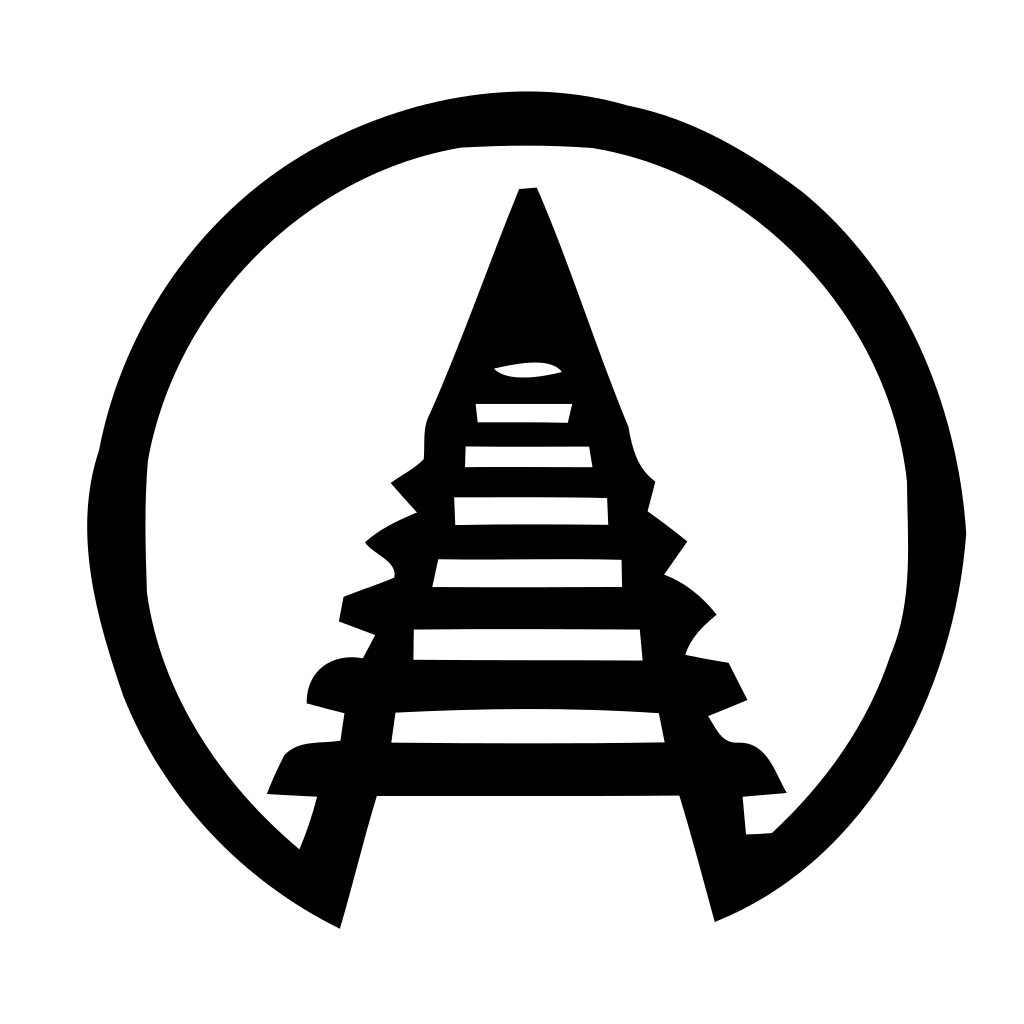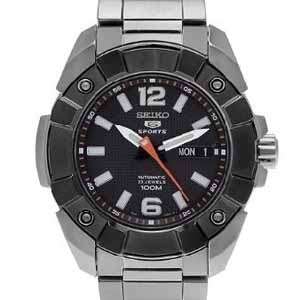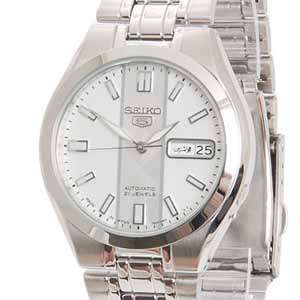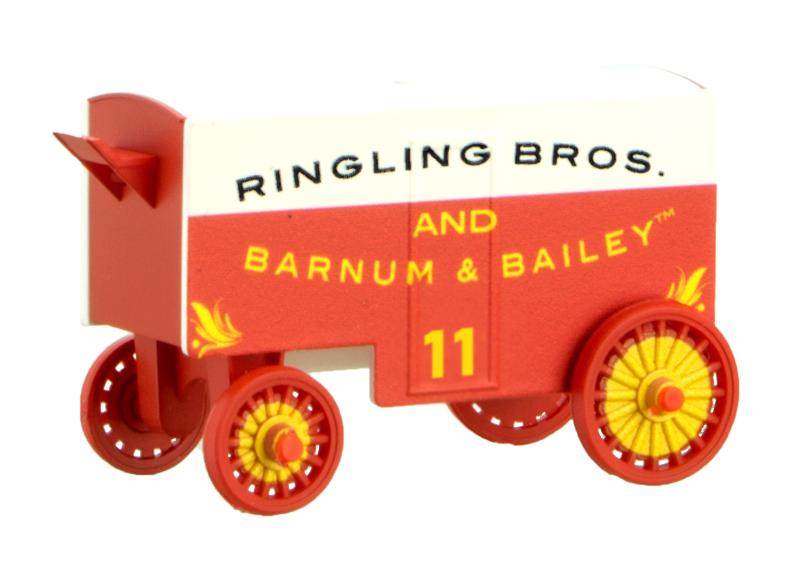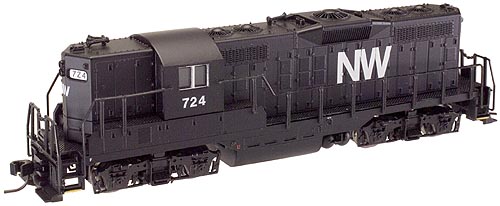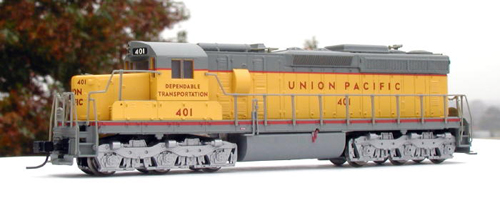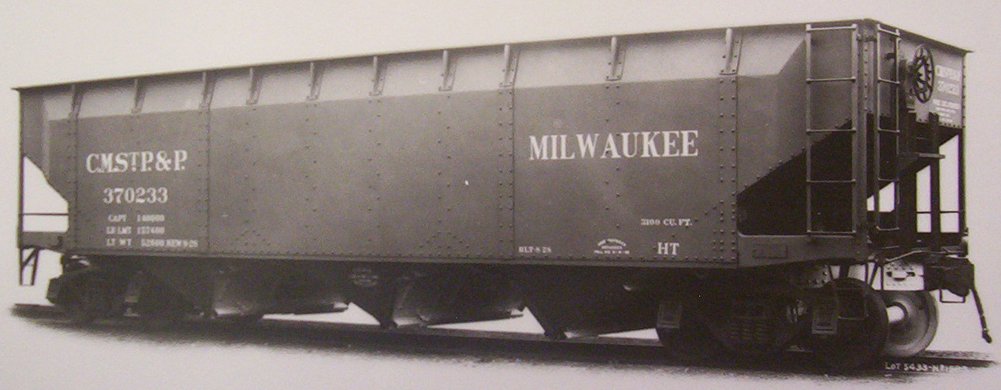Model Information: This body style was created by MDC Roundhouse and acquired by Athearn. The older MDC releases have Rapido couplers (the final few MDC releases included dummy knuckle couplers in the packaging) and the AThearn releases use Accumate or McHenry operating magnetic knuckle couplers.
Prototype History: 70 ton 3-bay offset side hoppers first appeared in the late 20s and by the late 30s had become an AAR standard design with cars being delivered from a number of builders in large quantities to railroads across the country. The last of these cars were delivered in the mid-'60s and many remained in service through the 80s.
Road Name History: The Louisiana and Arkansas Railway (reporting mark LA) was a railroad that operated in the states of Arkansas, Louisiana, and Texas. The railroad's main line extended 332 miles, from Hope, Arkansas to Shreveport and New Orleans. Branch lines served Vidalia, Louisiana (opposite Natchez, Mississippi), and Dallas, Texas.
The Louisiana and Arkansas Railroad was incorporated in Arkansas in 1898 for the purpose of acquiring former logging railroad properties in Arkansas and Louisiana. The railroad was constructed and initially operated under the leadership of William Buchanan, a prosperous timberman with extensive investments in southwest Arkansas and northwest Louisiana. Buchanan's partners were Harvey C. Couch and William Edenborn. Buchanan's primary company, Bodcaw Lumber Company, was headquartered in Stamps, Arkansas, and that city also served as headquarters of the L&A until the late 1920s. It was reorganized in 1902 as the Louisiana and Arkansas Railway.
During the late 1920s, a group of investors led by Harvey Couch began acquiring Louisiana & Arkansas stock. These investors owned electric and telephone utilities in Arkansas and Louisiana and believed that railroad ownership in their service area would also be profitable. When control of the L&A was thus secured on January 16, 1928, a new company was chartered in Delaware in 1928 to acquire the former Louisiana and Arkansas Railway Company and to acquire and lease the Louisiana Railway and Navigation Company. Louisiana Railway & Navigation operated a marginally profitable railroad between New Orleans, Shreveport and Dallas. The L&A inaugurated a new premier passenger train, The Shreveporter, on December 30, 1928, operating between Shreveport and Hope, Arkansas. This train carried a through Pullman sleeping car between Shreveport and St. Louis, Missouri, in conjunction with Missouri Pacific Railroad. A second named passenger train, The Hustler, was added to provide overnight service between Shreveport and New Orleans, beginning on July 2, 1932. 1930s
The Harvey Couch interests began purchasing stock of the Kansas City Southern Railway (KCS) in 1937. After gaining control of the KCS in 1939, a decision was made to merge the two properties. Kansas City Southern was the surviving corporation, with the Louisiana & Arkansas as a KCS subsidiary, but the KCS president and the controlling stockholders were all from the L&A. This merger created "single line" railroad freight service between Kansas City and New Orleans, and on September 2, 1940, a new KCS-L&A diesel powered streamliner, the Southern Belle, was inaugurated to connect the two cities.
In 1992, Kansas City Southern dissolved the subsidiary Louisiana & Arkansas Railway, although the former L&A route continues to be a major component of the Kansas City Southern.
The Louisiana and Arkansas Railroad was incorporated in Arkansas in 1898 for the purpose of acquiring former logging railroad properties in Arkansas and Louisiana. The railroad was constructed and initially operated under the leadership of William Buchanan, a prosperous timberman with extensive investments in southwest Arkansas and northwest Louisiana. Buchanan's partners were Harvey C. Couch and William Edenborn. Buchanan's primary company, Bodcaw Lumber Company, was headquartered in Stamps, Arkansas, and that city also served as headquarters of the L&A until the late 1920s. It was reorganized in 1902 as the Louisiana and Arkansas Railway.
During the late 1920s, a group of investors led by Harvey Couch began acquiring Louisiana & Arkansas stock. These investors owned electric and telephone utilities in Arkansas and Louisiana and believed that railroad ownership in their service area would also be profitable. When control of the L&A was thus secured on January 16, 1928, a new company was chartered in Delaware in 1928 to acquire the former Louisiana and Arkansas Railway Company and to acquire and lease the Louisiana Railway and Navigation Company. Louisiana Railway & Navigation operated a marginally profitable railroad between New Orleans, Shreveport and Dallas. The L&A inaugurated a new premier passenger train, The Shreveporter, on December 30, 1928, operating between Shreveport and Hope, Arkansas. This train carried a through Pullman sleeping car between Shreveport and St. Louis, Missouri, in conjunction with Missouri Pacific Railroad. A second named passenger train, The Hustler, was added to provide overnight service between Shreveport and New Orleans, beginning on July 2, 1932. 1930s
The Harvey Couch interests began purchasing stock of the Kansas City Southern Railway (KCS) in 1937. After gaining control of the KCS in 1939, a decision was made to merge the two properties. Kansas City Southern was the surviving corporation, with the Louisiana & Arkansas as a KCS subsidiary, but the KCS president and the controlling stockholders were all from the L&A. This merger created "single line" railroad freight service between Kansas City and New Orleans, and on September 2, 1940, a new KCS-L&A diesel powered streamliner, the Southern Belle, was inaugurated to connect the two cities.
In 1992, Kansas City Southern dissolved the subsidiary Louisiana & Arkansas Railway, although the former L&A route continues to be a major component of the Kansas City Southern.
Brand/Importer Information:  MDC Roundhouse was founded in California in 1938 and relocated in 1993 to Carson City, Nevada due to statewide restrictions on painting. MDC Roundhouse was a producer of both RTR (Ready-to-Run) and kit versions of N Scale rolling stock as well as RTR locomotives. They entered the N scale market in 1979 with a Thrall Hi-Side Gondola and a Hi-Cube Single Door Box Car. MDC Roundhouse was purchased by Horizon Hobbies in June of 2004, when its owner since 1938 C. H. Menteer retired, and merged into their Athearn line.
MDC Roundhouse was founded in California in 1938 and relocated in 1993 to Carson City, Nevada due to statewide restrictions on painting. MDC Roundhouse was a producer of both RTR (Ready-to-Run) and kit versions of N Scale rolling stock as well as RTR locomotives. They entered the N scale market in 1979 with a Thrall Hi-Side Gondola and a Hi-Cube Single Door Box Car. MDC Roundhouse was purchased by Horizon Hobbies in June of 2004, when its owner since 1938 C. H. Menteer retired, and merged into their Athearn line.
Unlike many of their contemporaries which contracted with European firms to produce their products, MDC made their own toolings. They made several popular body styles and produced them for road names that many other vendors (even Micro-Trains) wouldn't touch. This made them popular with modelers. Also, their un-assembled "kits" permitted a lower price point so they were popular with "runners" as well as "modelers".
Of particular interest was the attention given to modern 50 foot steel boxcars. They made some attempt to accurately mold the differences into distinct models to represent each of the major prototype manufacturers products. They have distinct toolings not only for the different products from FMC, BFF and PS, but also multiple models for each of these manufacturers including "standard" vs "Youngstown" doors and "waffle" vs. "rib" sides. In total they produced 13 different versions of the 50 foot steel boxcar.

Unlike many of their contemporaries which contracted with European firms to produce their products, MDC made their own toolings. They made several popular body styles and produced them for road names that many other vendors (even Micro-Trains) wouldn't touch. This made them popular with modelers. Also, their un-assembled "kits" permitted a lower price point so they were popular with "runners" as well as "modelers".
Of particular interest was the attention given to modern 50 foot steel boxcars. They made some attempt to accurately mold the differences into distinct models to represent each of the major prototype manufacturers products. They have distinct toolings not only for the different products from FMC, BFF and PS, but also multiple models for each of these manufacturers including "standard" vs "Youngstown" doors and "waffle" vs. "rib" sides. In total they produced 13 different versions of the 50 foot steel boxcar.
Item created by: CNW400 on 2020-07-31 17:05:31
If you see errors or missing data in this entry, please feel free to log in and edit it. Anyone with a Gmail account can log in instantly.
If you see errors or missing data in this entry, please feel free to log in and edit it. Anyone with a Gmail account can log in instantly.



